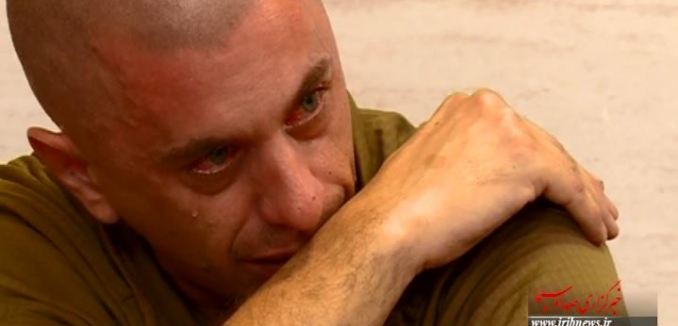Iranian state television on Wednesday broadcast photos and a video of an American serviceman appearing to cry after he and nine other U.S. sailors were captured by the country’s Islamic Revolutionary Guards Corps (IRGC) last month.
Tehran had previously publicized footage of the detained sailors kneeling with their hands behind their heads, as well as a video of one serviceman apologizing to Iran for unknowingly entering the country’s territorial waters. A U.S. military official said that the filmed apology was “clearly” staged.
Iran captured the ten sailors after one of their riverine boats veered into Iranian waters on January 12. According to U.S. Central Command, the sailors were taken at gunpoint to a port facility on Farsi Island, in the middle of the Persian Gulf, where they were detained for around 15 hours before being allowed to continue to Bahrain. The Iranians were also reported to have confiscated SIM cards from two satellite phones that the sailors had in their possession.
Naval and legal experts have criticized Iran’s seizure of the U.S. naval boats and its treatment of the sailors, arguing that Tehran breached multiple international laws. According to U.S. Navy Captain Sean Liedman, a fellow at the Council on Foreign Relations, the broadcasting of photos and videos for propaganda purposes violates the International Covenant on Civil and Political Rights, a treaty which bans degrading treatment of detainees that was ratified by Iran in 1975. The transmission of the footage may have also breached the Geneva Convention, which protects prisoners of war “against acts of violence or intimidation and against insults and public curiosity.”
A similar case was made after Iran captured 15 British sailors and marines in 2007, when the British government asserted that the release of their images breached the Third Geneva Convention.
Iranian Supreme Leader Ayatollah Ali Khamenei praised the IRGC troops who seized the U.S. sailors last month and awarded them Fath medals, which are reserved for war heroes.
Rear Admiral Ali Javadi, the commander of the IRGC navy, said last week that Iran possesses additional footage of the American sailors that would bring “humiliation” to the U.S. and make American officials “100 times more embarrassed” if released.
Iran state TV airs new footage of captured US sailors, sailor in tears in footage pic.twitter.com/nSzQFBB0G8
— Sobhan Hassanvand (@Hassanvand) February 10, 2016
Iran’s defense minister, Gen. Hossein Dehghan, announced on Wednesday that the Islamic Republic will unveil an upgrade of the ballistic missile it tested last October in defiance of UN Security Council (UNSC) Resolution 2231, which authorized the nuclear deal with Iran. The long-range missile, Emad, can carry a nuclear warhead and reach Israel. At a Senate hearing Tuesday, Director of National Intelligence James Clapper stated that Iran’s missile launches were “a deliberate message of defiance.” He also warned that Iran views the nuclear deal as “a means to remove sanctions while preserving some of its nuclear capabilities, as well as the option to eventually expand its nuclear infrastructure.”
Dehghan added that Iran will also purchase fighter jets from Russia. According to UNSC Resolution 2231, the sale of any major arms, such as combat aircraft, to Tehran must be approved by the United Nations Security Council. The U.S. and its allies are thus likely to veto a Russian attempt to sell fighter jets to Iran. However, this safeguard will expire in 5 years, possibly earlier. At the Senate hearing, Vincent Stewart, the director of the Defense Intelligence Agency, stated that “within the next two to five years, we can expect Iran to invest in some of those weapons technology that’s being displayed on the Syrian battlefield by the Russians today.”




